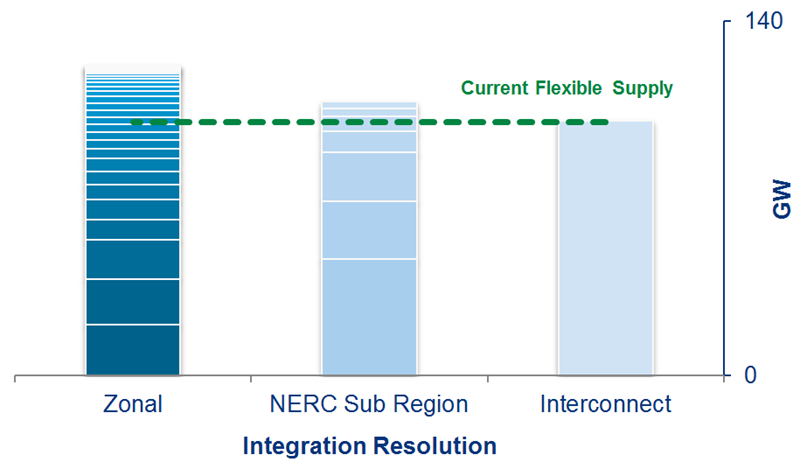Discuss your challenges with our solutions experts
Flexibility: can California conquer the next phase of renewables?
1 minute read
A power grid that is reliable, affordable, and clean may be one of the 21st century's greatest ambitions, and no economy is blazing the trail faster than California.
Between its 50% state renewable portfolio standard (RPS), aggressive greenhouse gas (GHG) emission reduction targets, and energy efficient mandate, California has some of the strictest environmental policies in North America. However, these mandates have introduced a new set of operational challenges, including overgeneration, renewable curtailments, local transmission congestion, and flexible backstop procurement.
If incremental solar can no longer be absorbed during midday hours, the curtailment could put California's ambitions on hold and cause the state to fall short of its RPS targets and GHG displacement goals. Moreover, the end-of-day peak (in which customers are returning home from work and causing an uplift in demand) and the setting of the sun (in which solar resources cease to generate power) coinciding has created a need for fast-start and flexible resources. This has caused system operators to recognize and design a flexible ramping product and procurement requirements.
The proliferation of grid edge technology will allow CAISO to better plan, react, pool resources and take advantage of new demand response opportunities. As an example, the ever-growing CAISO Energy Imbalance Market has enabled system operators to pool resources across a wider market footprint and consequently reduce renewable curtailments. The chart below illustrates how western grid integration at various topology resolutions reduces the need for incremental flexible capacity.
In addition to grid edge, energy storage technology such as batteries will broaden the market in which renewables can serve load without being curtailed, acting as a relief valve between the pent-up midday oversupply and the relatively untapped off-peak hours. In doing so, scaled-up storage capacity will reduce the end-of-day ramp and serve as an emission-free flexible resource.
A system that is both reliable and clean to the level that California has mandated is simply unattainable without battery and grid edge support. Since batteries have yet to cross the economic threshold to unleash widespread adoption and many grid edge solutions will require vetting, California is scrambling to develop incentives and a framework where these technologies can begin to thrive and help the state keep its environmental progress from stagnating.
Time will tell if California will rise to its self-imposed challenge, however, preliminary results along the way will be critical as they will likely guide followers on how to (or possibly how not to) balance the pillars of reliability, affordability, and cleanliness in one of the world's largest economies.






